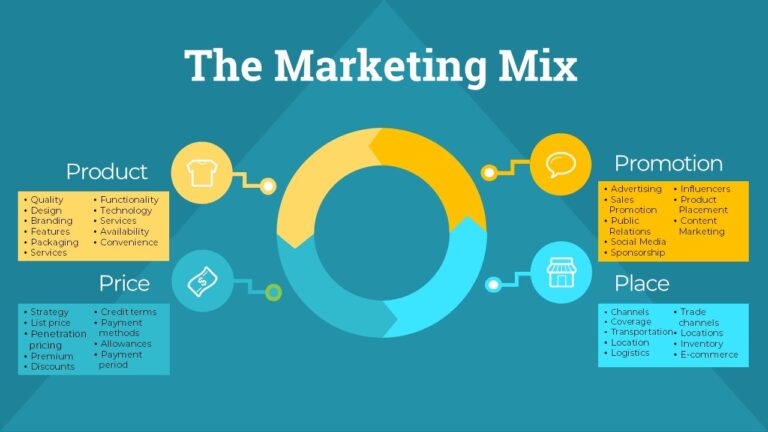Discover 11 Ways to Understand Digital Marketing Analytics
If you are struggling to show your boss the real impact of your digital marketing analytics efforts. Or you are looking for ways to prove that your inbound marketing is delivering results?
You want to Track your marketing analytics to achieve that. It’s not just about showing off your success—it’s about using data to supercharge your marketing strategies.
You see, anyone can use analytics to report on performance, but the real magic happens when you turn those numbers into action.
Good marketers don’t just stop at showing off their achievements; they use analytics to adapt, improve, and turbocharge their marketing efforts.
In other words, they make their analytics work for them, and that’s where the real value lies. So, if you’re ready to take your marketing to the next level, You are in the right place.
Make the Most of Your Digital Marketing Analytics by…
The Foundation of Effective Analysis
Before we delve into the advanced techniques, let’s establish a solid foundation for understanding digital marketing analytics.
Digital Marketing Analytics Techniques
Now that we’ve covered the basics, let’s explore powerful techniques that can take your analysis to the next level.
1. Deciding What to Blog About
Check your blog stats to see what your audience likes. Here’s how:
Group Your Blog Posts: First, organize your blog posts by their main topics.
Analyze Views: Then, see how many people view each post on those topics.
Spot Trends: Do you notice that some topics get more views than others?
For instance, let’s say you’re a unicorn breeder, and you write blogs about different aspects of unicorn care. After checking your stats, you might realize that more people read your blogs about unicorn diets than those about unicorn exercise.
Adjust Your Strategy: Now, it’s time to adapt. Since your readers are more interested in unicorn diets, you should create more content about that. Give your audience what they want, and you’ll have happier unicorn enthusiasts!
2. Picking the Best Social Media Platforms for Your Focus
When you have lots of social media sites to handle, it’s tough to decide where to focus your time. So it’s better to make this decision easier by using analytics.
Here’s how:
Analyze Your Traffic: Take a close look at where your website visitors are coming from on each social media site. See which ones bring in the most visitors and leads.
Scenario: You run a small business that sells handmade jewelry. You use three social media platforms: Facebook, Instagram, and Twitter.
Step 1: Analyze Your Traffic
Facebook: You notice that over the past month, Facebook has brought 500 visitors to your website, and 50 of them signed up for your newsletter or expressed interest in your jewelry.
Instagram: Instagram, on the other hand, has brought in 300 visitors but only 20 of them showed interest in your jewelry.
Twitter: Twitter, surprisingly, has only driven 100 visitors to your website, and none of them seem particularly interested in your products.
Step 2: Check Conversion Rates
You use a tool to track which of these visitors from each platform eventually made a purchase.
You find out that out of the 50 Facebook leads, 10 turned into paying customers.
From the 20 Instagram leads, 5 became customers.
However, none of the Twitter visitors converted into customers during this time.
Step 3: Allocate Your Time
Given this data, it’s clear that Facebook is the most effective platform for your jewelry business. It not only brings in more visitors but also has a higher conversion rate.
Instagram, while not as effective as Facebook, still brings in some valuable leads and conversions, so it’s worth maintaining a presence there.
Twitter, in this case, doesn’t seem to be a productive platform for your business, so you might decide to reduce your time and effort there.
3. Improve Your SEO Game in Simple Steps
If you’ve been doing SEO for a while, you’ve likely done some research to figure out the right keywords for your website. You make your strategy even better. The data you’ve collected from SEO can help you decide which keywords are best for building links and creating content.
Step 1: Check Your Analytics
Take a look at your analytics tool, which shows you how people found your website. It’s like a treasure map. You want to know which keywords brought the most people, leads, and customers.
Example: Say you run a fitness website. Your analytics show that the keyword “healthy recipes” brought in a ton of visitors and some of them signed up for your newsletter and even bought workout plans. This tells you that “healthy recipes” is a great keyword to focus on.
Step 2: Find New Keywords
Now, you can use this data to find similar keywords. These are called “long-tail keywords.” They’re like variations of the words that are already working well for you.
Example: Since “healthy recipes” is doing great, you might try targeting long-tail keywords like “low-calorie dinner recipes” or “easy vegan breakfast recipes.”
Step 3: Fix Content Gaps
Sometimes, you’ll see that a keyword brings in lots of visitors but they don’t do what you want them to do, like signing up or buying. This means there’s something missing on your website.
Example: You notice that people searching for “fitness tips” visit your site, but they don’t become customers. It could be because you don’t have any workout plans to sell. To fix this, you create workout plans to match those keywords and turn those visitors into customers.
“No matter how niche or mainstream your market is, great content remains a significant focus for SEO.”
Kristopher Jones, Founder of LSEO
4. Concentrate on the Marketing Channels That Get Results
When you have closed-loop data, it’s not just about lead scoring. but about figuring out which marketing channels work best compared to others.
Step 1: Analyze Your Channels
Think of your marketing channels like different tools in your toolbox. You want to know which ones are the most effective at bringing in actual customers.
Example: Imagine you run an online store selling handmade jewelry. You use email marketing, search engine optimization (SEO), blogging, and social media to promote your jewelry.
After checking your closed-loop data, you see that most of your customers come from email marketing. However, SEO and blogging aren’t bringing in many customers.
Step 2: Optimize Your Strategy
Now, you have a valuable insight. Then, you realize that there’s a big opportunity to improve your blog and SEO efforts to reach more potential customers.
Example: You decide to invest more time in creating better blog content and optimizing your website for search engines. This way, more people can discover your jewelry through online searches.
Step 3: Adjust Your Focus
You might also discover that, while you spend a lot of time on social media, those leads don’t often become customers. However, leads from your blog tend to convert into customers more frequently.
Example: With this insight, you redirect some of your social media efforts toward promoting your blog.
By critically analyzing your closed-loop data, you can identify which marketing channels are your strongest performers and which ones need improvement. By so doing you make your marketing efforts more effective and productive.

5. Using Data to Find Your Best Leads
If your business gets a lot of potential customers (leads), it’s essential to figure out which ones are most likely to become actual customers. It is called “lead scoring,” and it can help your sales team focus on the leads that matter the most.
Step 1: Define a Marketing Qualified Lead (MQL)
Think of an MQL as a lead that’s like a ripe fruit—ready to become a customer. To understand what an MQL looks like for your business, you’ll need data from three sources:
Demographic Information: This is like getting to know your lead’s background, such as their job, the company they work for, and their industry.
Example: You run an online bookstore, and you find that leads who work in education (like teachers and librarians) often become your customers.
Lead Intelligence: This data shows what your leads are interested in and what they do on your website.
Example: You notice that leads who fill out book recommendation forms and visit multiple book pages on your site are more likely to buy books.
Closed-Loop Data: This helps you understand which actions on your website lead to actual sales.
Example: You see that when people sign up for your monthly book club newsletter, they tend to buy books within a month.
Step 2: Combine and Assign Values
Now, take all this data and mix it together to create a scoring system. Some criteria are more important than others, so you assign points accordingly. When a lead accumulates enough points, it becomes an MQL and gets handed over to the sales team.
Example: You decide that a lead who works in education gets 10 points, someone who fills out a book recommendation form gets 5 points, and subscribing to your book club newsletter gets 8 points. If a lead scores 20 points or more, they’re an MQL.
Step 3: Prioritize Your Leads
With this scoring system, your sales team can easily see which leads are most likely to buy, and they can focus on them first. Other leads can stay with your marketing team a bit longer until they’re ready to make a purchase.
6. Decide How Often to Send Emails
Are you wondering if you’re sending too many emails to your subscribers or maybe not enough? To figure this out, you’ll need to do a bit of testing, but it’s worth it because the insights you gain from your analytics will help you decide the perfect number of emails to send.
Step 1: Set Your Hypothesis
Think of a hypothesis like a smart guess. What are you trying to find out? For example, do you think that sending more emails will lead to more people buying your products? Or maybe you want to check if sending fewer emails will make fewer people unsubscribe.
Example: Let’s say you run a fashion store online. Your hypothesis is that if you send emails every day instead of once a week, you’ll sell more clothes.
Step 2: Use Your Analytics
Now, it’s time to use your email data. First, pick a part of your email list to use as a test group. This group will help you figure things out. Look at their open rate (how many people open your emails), deliverability rate (how many emails actually get to the inbox), unsubscribe rate (how many people say they don’t want your emails anymore), and click-through rate (how many people click the links in your emails). These numbers are like your starting point.
Example: You choose a group of 1,000 subscribers who like dresses. Right now, you send them emails once a week, and 20% of them open your emails, 10% click on your links, and only 2% unsubscribe.
Step 3: Start Your Test
Now, send a series of emails to your test group using the new frequency you guessed in your hypothesis. In this case, it’s one email every day.
Example: You send an email every day for two weeks.
Step 4: Compare the Results
When the test is over, compare the new data (from the daily emails) to your old data (from the weekly emails). Did you sell more dresses? Did more people open your emails? Did fewer people unsubscribe?
Example: After your two-week test, you see that 25% of people open your daily emails, and 15% click on the links. Surprisingly, only 1% unsubscribe.
Now you can see if your hypothesis was correct. If sending more emails boosted your sales and didn’t annoy your subscribers, it might be a good strategy. But if it didn’t work as you thought, you can stick with the old way of sending emails.
7. Funnel Analysis for Optimization
Picture the journey your customers take when they buy from you. It’s like a path they follow, right? Well, let’s make that path work better for you.
Step 1: Map the Journey
Think of it like drawing a map. You want to see where people start, like when they visit your website, and where they end up, like when they make a purchase.
Example: Imagine you run an online shoe store. People start at your homepage and, hopefully, end up at the checkout with a new pair of shoes.
Step 2: Find the Hiccups
Sometimes, people get lost on the path, like taking a wrong turn. You need to find those points where they leave your site without buying.
Example: You notice that many people add shoes to their cart but don’t finish buying. That’s a hiccup in your path.
Step 3: Fix the Path
Once you find those hiccups, you can make changes to guide people back on track. It’s like fixing the path so they don’t get lost.
Example: You realize that your checkout page is too complicated. So, you simplify it, and more people complete their purchases.
8. Attribution Modeling for Channel Effectiveness
Attribution modeling helps you understand which marketing channels contribute most to conversions. This insight guides budget allocation for maximum impact.
How to Utilize this Technique:
- Identify Channels: Thoroughly discern the multitude of channels through which users interact with your brand, including social media, search, and email.
- Conversion Tracking: Implement robust tracking mechanisms to accurately attribute conversions to specific channels.
- Analyze Conversions: Examine each channel’s contribution to conversions and overall revenue.
- Allocate Budget: Allocate your marketing budget wisely, directing resources towards channels that yield the highest ROI.
- Multi-Touch Attribution: Consider adopting sophisticated attribution models such as linear, time decay, or U-shaped models for a comprehensive and nuanced perspective.
9. A/B Testing and Multivariate Testing
Experiment with different versions of your content or website to determine what resonates best with your audience. A/B and multivariate testing provide quantitative insights into user preferences.
How to Utilize this Technique:
- Hypothesis Formulation: Craft a clear hypothesis about potential changes that could substantially enhance user engagement or conversion rates.
- Variations Creation: Develop multiple versions of webpages or content elements to be tested against the original.
- Testing Tools: Utilize specialized A/B testing platforms to orchestrate experiments and precisely measure outcomes.
- Data Collection: Rigorously collect quantitative data encompassing user interactions and conversion metrics for each variation.
- Statistical Analysis: Thoroughly analyze the outcomes to identify which variation performs notably better and attains statistical significance.
- Implementation: Actively integrate the winning variation into your strategy to heighten your overall marketing effectiveness.
10. Predictive Analytics for Future Trends
Utilize historical data to predict future trends. Predictive analytics empowers you to stay ahead of the curve and adjust your strategies proactively.
How to Utilize this Technique:
- Historical Data Gathering: Accumulate an expansive dataset spanning various metrics like sales, website traffic, and customer behavior over time.
- Model Selection: Opt for an appropriate predictive model—such as linear regression or time series analysis—suited to your dataset’s characteristics.
- Data Preprocessing: Dedicate time to meticulously clean and prepare your data for analysis, addressing any missing values and outliers.
- Model Training: Train your predictive model using the historical data and relevant features you’ve assembled.
- Future Predictions: Leverage your trained model to generate predictions on forthcoming trends and outcomes.
- Strategy Adjustment: Adapt your marketing strategies proactively based on the predictions you’ve gleaned, positioning yourself ahead of industry shifts.
11. User Behavior Analysis with Heatmaps
Heatmaps visually represent user interactions with your website. By analyzing these heatmaps, you can identify areas of interest, attention, and friction.
How to Utilize this Technique:
- Heatmap Tools Implementation: Employ specialized heatmap tools to visually represent and comprehend user interactions, clicks, and scrolling patterns across your website.
- Pattern Identification: Scrutinize the heatmap data to uncover patterns in user engagement, identifying regions of heightened click activity and sections users frequently overlook.
- Scroll Depth Analysis: Delve into the data to gain insights into how far users scroll on your pages, elucidating what content genuinely captures their attention.
- Click Distribution Evaluation: Thoroughly assess which elements—ranging from buttons to links and images—receive the most clicks from users.
- Actionable Insights Utilization: Utilize the insights gleaned from heatmaps to orchestrate strategic adjustments in design and content, elevating overall user experience.
Conclusion
Digital marketing analytics isn’t just about numbers; it’s about understanding your audience on a deeper level. These 9 powerful techniques provide a roadmap for extracting meaningful insights from your data. By mastering these techniques, you can refine your strategies, enhance user experiences, and drive remarkable results in the ever-evolving digital landscape. Remember, the key to success lies in harnessing the power of data to make informed decisions.
Frequently Asked Questions
1. What are some common challenges businesses face when implementing digital marketing analytics?

Common challenges include data fragmentation from various sources, difficulty in attributing conversions accurately, data privacy concerns, selecting the right metrics, and effectively translating data into actionable insights.
2. Can you provide examples of industries that have seen significant improvements through the application of predictive analytics in their digital marketing strategies?

Industries like e-commerce, finance, and healthcare have leveraged predictive analytics to enhance customer recommendations, optimize ad targeting, forecast sales, and personalize user experiences.
3. How do I ensure the accuracy and reliability of the data I’m collecting for my digital marketing analytics?

Ensuring data accuracy involves regular data audits, proper tracking implementation, using reliable analytics tools, validating data against multiple sources, and addressing data gaps promptly.
4. Are there any ethical considerations to keep in mind when collecting and analyzing customer data for digital marketing purposes?

Absolutely. Businesses should prioritize user consent, transparent data collection practices, secure storage, and avoid invasive data collection. Compliance with data protection regulations is crucial.
5. What role does machine learning play in enhancing the effectiveness of digital marketing analytics?

Machine learning can analyze vast datasets to uncover hidden patterns and insights, automate predictions, personalize content and recommendations, and optimize marketing campaigns in real-time.









